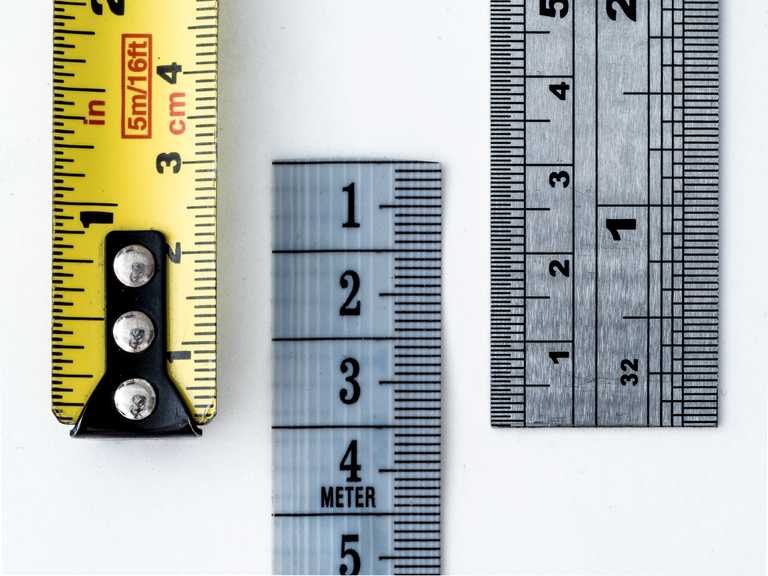How to Measure Success in Scrum Agile Methodology
Since Scrum is a unique approach to project management, measuring success in Scrum is also more complex. So, keep reading this guide to learn how to measure success in Scrum Agile methodology using six key metrics.

Organizations from various industries are embracing agile methodologies, like Scrum, to modernize operations, enhance productivity, drive innovation, and deliver value to customers faster. With the structured, incremental approach to project management, Scrum is helping hundreds of thousands of development teams to deliver high-quality products timely and efficiently.
Given that Scrum represents a unique approach to project management, measuring success in Scrum is also different. Consequently, many newly formed Scrum teams struggling with gauging their effectiveness in utilizing the Scrum methodology also face trouble establishing well-defined metrics for measuring their success in Scrum. Therefore, this article explores in detail how to measure success in Scrum Agile methodology, shedding light on crucial metrics that organizations/teams should consider to evaluate their progress and achieve continuous improvement.
Why is it Challenging to Define Success in Scrum?
Before we head to the metrics that can help measure success in Scrum, it is important to highlight why defining success in Scrum or any other Agile methodology seems challenging. There can be a generalized checklist that any Scrum team can use to measure success. However, that's not the case with Agile Scrum methodology.
Since Agile methodologies are getting embraced by different organizations from various industries, everyone has different goals in mind. Some may prioritize faster implementation, while others may emphasize increased efficiency. According to the 14th Annual State of Agile report, different organizations have different top measures that define success in Agile, such as:
- 58% say customer/user satisfaction
- 54% say business value
- 48% say on-time delivery
- 45% say quality
- 44% say business objectives achieved
- 40% say productivity
- 37% say organizational culture/morale
- 35% say process improvement
From the above statistics, it is evident that customer satisfaction, business value, and on-time delivery are the top measures of success for most organizations. But it also reflects that there is no one-size-fits-all definition of success in Agile/Scrum. In short, the variability in goals and priorities among organizations highlights the challenge of defining success in a standardized manner.
6 Metrics to Measure Success in Scrum
Choosing the best Scrum metrics to measure success is easier said than done. It requires thorough analysis and brainstorming to pinpoint what parameters will best reflect the success of Scrum for a particular organization. However, there are a few common metrics that are used by many Scrum teams to measure success. Therefore, we will now list the top six metrics to measure success in Scrum. Teams can use them all or selectively depending on the goals they want to achieve with Scrum.
1. Customer Satisfaction
In the current competitive era, customer satisfaction is of deem important to organizations, making it one of the fundamental pillars of success in Scrum. Scrum also values customer satisfaction a lot, and that's why it has made customer feedback part of the development process (sprint review).
To measure the customer satisfaction metric, below are the main parameters to consider:
- Overall satisfaction ratings
- Nature of customer support inquiries
- Nature of customer feedback
- Retention rates
All the above parameters will provide significant data that the team can use to reflect the satisfaction level of customers. However, customer satisfaction in Scrum is not a one-time thing but an ongoing process. The iterative development of the products requires continuous engagement with customers to address their feedback and suggestions, leading to a trustworthy and long-lasting satisfactory experience. Therefore, if the team is considering customer satisfaction as a success metric, then make it a continuous evaluation and improvement process.
2. On-Time Delivery
On-time delivery is another important metric to define success in Scrum Agile methodology. On-time delivery not just reflects the team's commitment to meeting deadlines but also enhances the credibility and trust with stakeholders.
To measure the on-time delivery metric, below are the main parameters to consider:
- Sprint burndown chart to know the remaining work over time within a sprint
- Team velocity reflects the average number of user stories the team completes within a sprint
- Cycle time to measure the duration to move through the entire Scrum process, from initiation to completion
- Delivery lead time to know the duration from when a work item is initiated to when it is made available for use
All the above parameters help the team reflect its efficiency and productivity, which then presents the frequency of on-time delivery. Therefore, regularly monitoring and analyzing this metric and taking required actions enables the team to refine delivery processes, optimize workflow, and achieve consistent on-time delivery.
3. Team Collaboration and Communication
Scrum-based project management is all about the self-organized team that keeps collaboration and communication as its core principles. Therefore, effective collaboration/communication is crucial to measure success in Scrum. When a team showcases an excellent collaboration and communication environment, it enhances efficiency, productivity, and overall project outcomes.
To measure the team collaboration and communication metric, below are the main parameters to consider:
- Involvement of team members in product backlog estimation meetings using any technique, like Async Poker, Planning Poker, etc.
- Effectiveness of daily stand-up meetings
- Cross-functional collaboration
- Effectiveness of sprint retrospective meetings
- Stakeholders' involvement and satisfaction
- Openness
- Usage of collaboration tools
All the above parameters help the team reflect on where its collaboration and communication efforts excel and where improvements can be made. Therefore, regularly assessing this metric not just helps measure success in Scrum but also allows the team to identify bottlenecks and gaps to enhance collaboration.
4. Business Value Delivered
Another crucial success metric in Scrum is the actual value delivered to the business/customer. This metric is about assessing the impact of efforts made by the Scrum team on the organization's strategic objectives, cost savings, revenue generation, or customer satisfaction. This helps validate the Scrum methodology's effectiveness in delivering valuable business outcomes.
To measure the business value metric, below are the main parameters to consider:
- Time to market
- Return on investment
- Key performance indicators
- Customer retention and satisfaction
- Alignment with the organization's strategic objectives
All the above parameters help the team assess the effectiveness of its efforts and the impacts they cast on delivering business value. Therefore, regularly assessing this metric will help the team prioritize work effectively, make informed decisions, and optimize the efforts to deliver more business value.
5. Product Quality
Product quality also reflects the effectiveness of Scrum methodology and serves as an important metric to measure success. When a team manages to deliver high-quality products utilizing the Scrum methodology, it reflects positive improvements in the workflow of the team and the effectiveness of Scrum.
The different parameters to measure the product quality metric are as follows:
- User experience
- Customer satisfaction
- Revenue growth
- Cumulative progress around testing activities
- Defect density
- Feedback loop duration
All the above parameters help the team get valuable insights about the effectiveness and success of its Scrum implementation. Therefore, regularly assess this metric to evaluate and make informed decisions to enhance product quality continuously.
6. Process Improvement
Since most teams that adopt Scrum intend to enhance productivity, modernize operations, and deliver value to customers faster, the process improvement metric also reflects the team's success in Scrum. By measuring the process improvement, the team can reflect on how Scrum positively improves the overall project management landscape.
The process improvement metric requires a comparison of different parameters before and after implementing Scrum. Some of those parameters include:
- Cycle time to complete a user story from start to delivery
- Lead time to reflect the moment the user story is requested to its completion
- Sprint velocity
- Sprint burndown
- Implementation of sprint retrospective action items
- Customer feedback and satisfaction
Other than the above parameters, all the five metrics listed above can also contribute to measuring the process improvement metric. Therefore, keep a close eye on this metric to identify the areas of enhancement, optimize processes, and drive continuous improvement.
Wrapping Up
Measuring success in Scrum Agile methodology is a complex process, as it requires a proper understanding of the unique priorities and goals within that organization. However, the absence of a one-size-fits-all definition of success in Scrum also reflects the flexibility and adaptability of this methodology. The above metrics provide a glimpse of some of the key metrics that most Scrum teams use to define their success. To sum up, consider the above metrics and more depending on your team's specific goals and embrace a balanced and context-specific approach to measuring success in Scrum.


